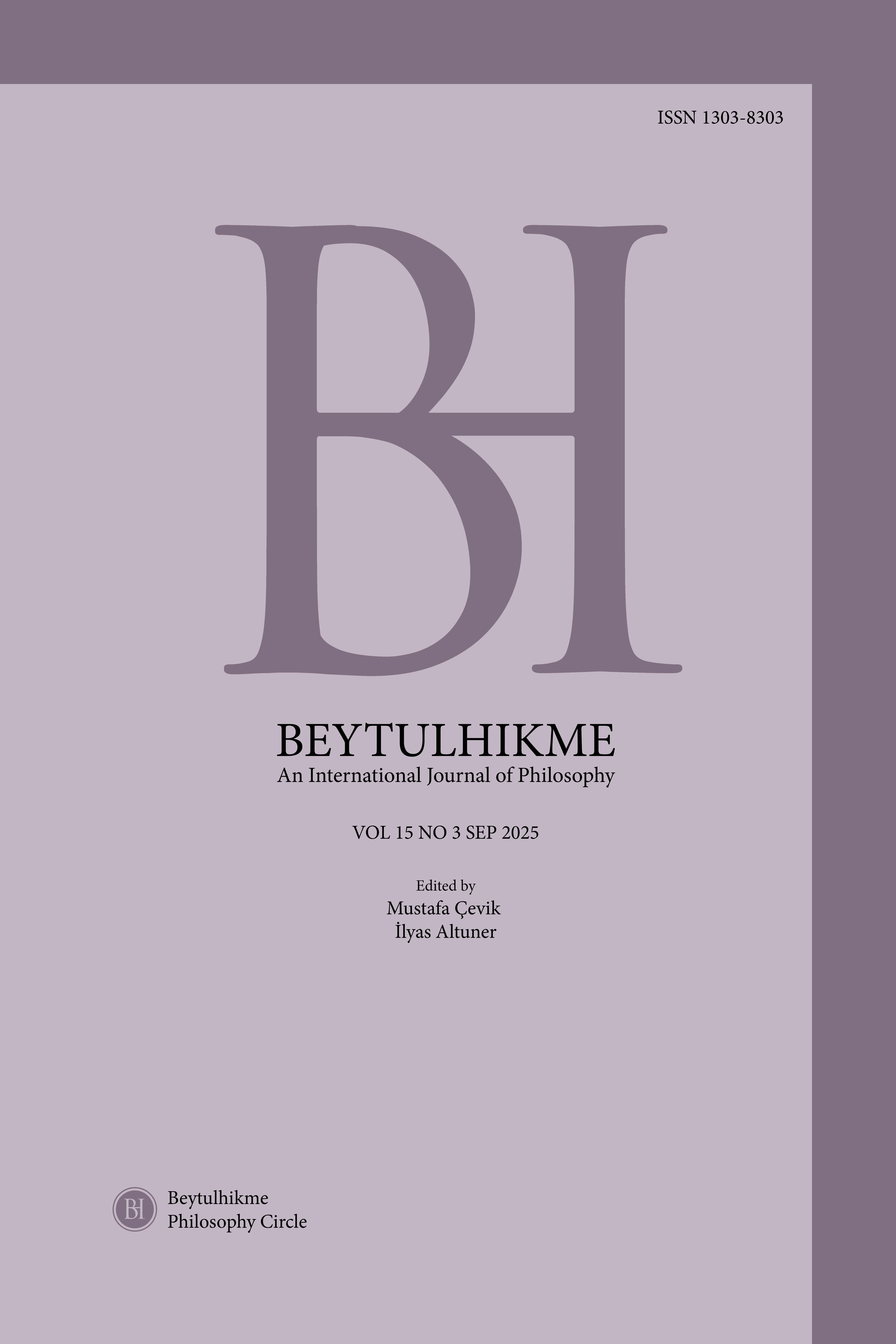Zihinsel Mantık Teorisi ve Klasik Mantık Çerçevesinde Hipotetik Kıyasların Neliğine Eleştirel Bir Çözüm Önerisi
Author :
Abstract
Bu çalışmada, düşünme biçimi olarak mantığın ontolojik gerçekliğini kısmen reddeden zihinsel mantık teorisi, hipotetik kıyaslar bağlamında ele alınarak klasik mantıkla karşılaştırılmakta ve söz konusu iki sistem, formel araçlar kullanılarak eleştirel bir değerlendirmeye tabi tutulmaktadır. Yapılan karşılaştırma sonucunda, klasik mantığın hipotetik kıyas formu ile zihinsel mantığın sunduğu şemaların belirli noktalarda örtüştüğü, ancak çıkarım sürecinde oluşan sistematik hataların sebebi noktasında farklı yaklaşımlar benimsedikleri ortaya konulmuştur. Bu ayrışmayı anlamlandırmak ve aşmak amacıyla, modal mantığın sunduğu “zorunluluk,” “mümkünlük” ve “imkânsızlık” kavramları temelinde alternatif teorik bir model geliştirilmiştir. Bu yeni model, klasik mantık ile zihinsel mantık arasındaki boşluğu doldurmanın yanı sıra, bireylerin farkındalığını artırmayı ve hipotetik kıyas için daha sağlam ve tutarlı bir temel oluşturmayı hedeflemektedir. Dolayısıyla model, insan zihninde içkin olarak bulunan sentaktik yapının, çeşitli epistemolojik perspektifler doğrultusunda yeniden yapılandırılabileceğini göstermektedir.
Keywords
Abstract
This study examines the theory of mental logic, which partially rejects the ontological reality of logic as a mode of thinking, by analyzing it in the context of hypothetical syllogisms and comparing it with classical logic. These two systems are subjected to a critical evaluation using formal tools. The comparison reveals that while the hypothetical syllogism of classical logic and the schemas proposed by mental logic overlap at certain points, they adopt different approaches in explaining the systematic fallacies that arise in the reasoning process. To interpret and overcome this divergence, an alternative theoretical model has been developed based on the concepts of "necessity," "possibility," and "impossibility" as proposed by modal logic. This new model not only bridges the gap between classical and mental logic but also aims to enhance individuals awareness and establish a more solid and coherent foundation for hypothetical reasoning. Consequently, the model demonstrates that the syntactic structure inherent in the human mind can be reconstructed through various epistemological perspectives.





